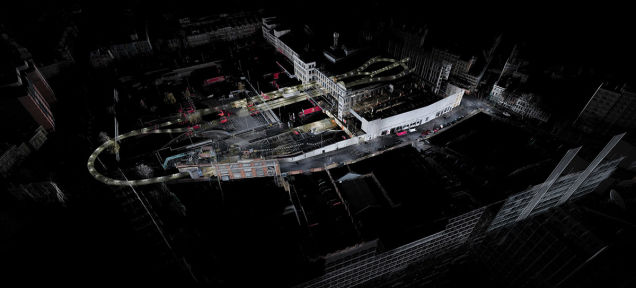I hold my last LO post to find interesting works that are related to my current interests for the final projects.
First, I’ll talk about an interest on agents as a platform for creativity that emerged in my first LO and also unfolded in my data viz proposal – in which I try to de-contextualize buildings and make them behave micro-organisms under a microscope.
In this context, I discovered a series of workshops called The Abyss, by Andreas Gysin, which took place between 2011 and 2012. Not only the workshops produced a very interesting result but also Gysin stated a very smart pedagogical approach to engage different students with different skill sets in a shared experiment. During a workshop session, each student can develop a customized kind of micro-organism life-form with its own behaviours. In the end, all these micro-organisms would share the same space in a kind of ecosystem. What is interesting is that this pedagogical approach allows the emergence of unexpected situations in 2 levels. It provides a good degree of freedom to the development of agents, so each student can do completely different stuff. Furthermore, even if you know the agents, their interaction in a common environment could also ensure the emergence of novelty.
The second topic that I will address is not directly related to IACD course, but to my general interest in spatial arrangements. I am interested in using bubbles as a support for spatial exploration. Particularly, I am interested in the capacity of a flexible bubble to behave as an agent and also to adapt to the adjacent boundaries. This extrapolates agency and takes me to physical simulation. I couldn’t find advanced projects in this area, so I will show two videos of small experiments.
The first is a processing arrangement of 2d blob-like cells that adapt to their context.
Looking for the name of the author (Muehl Seife), I found this blog with a variety of projects with swarms and particles. Paricularly, I find the Interactive Swarm really provocative. WIth the support of correlations library the author developed a bubble attraction field for swarms that the user can customize in real time.
I think these different agent-based techniques (combined with some basic physical simulation) could be used for design exploration. In particular, these systems could be embedded with an enough amount of intelligence to explore new spatial patterns.
